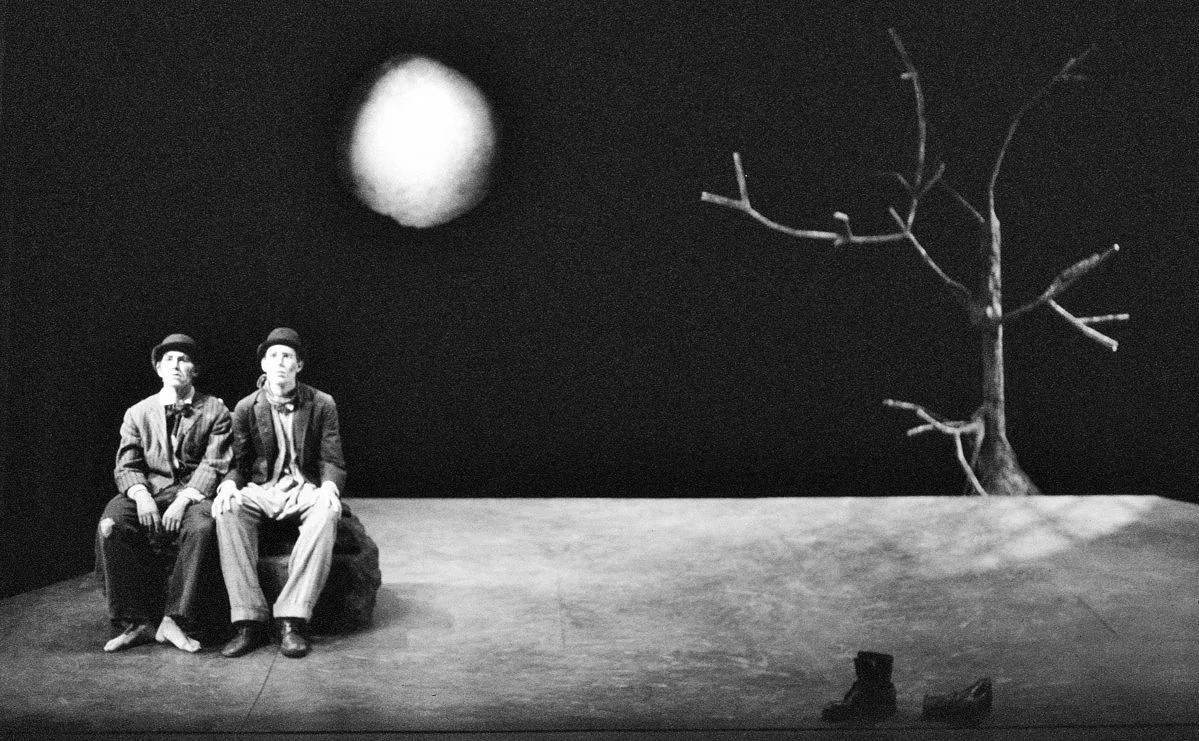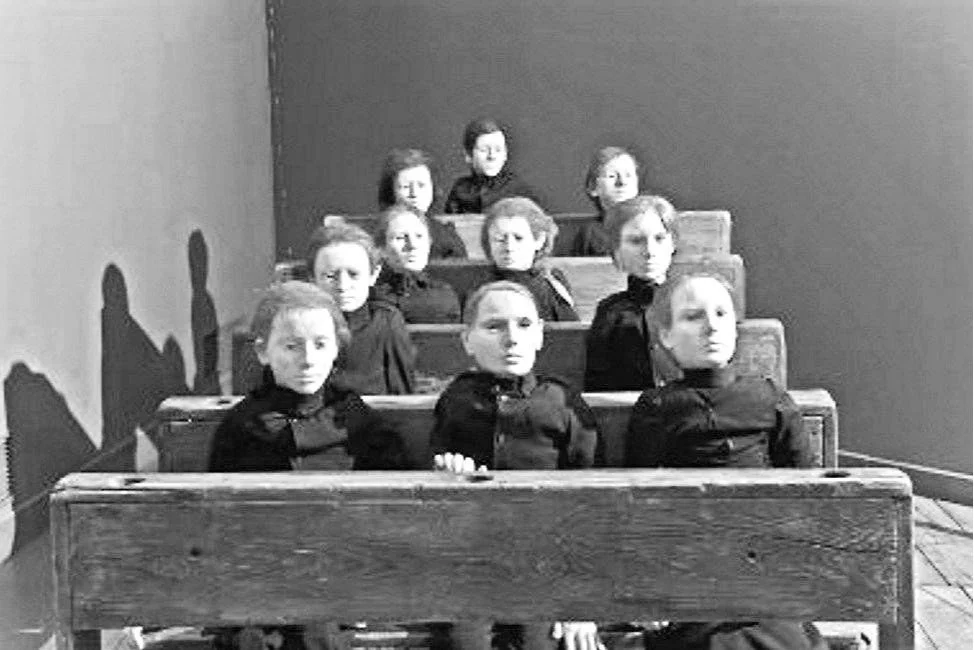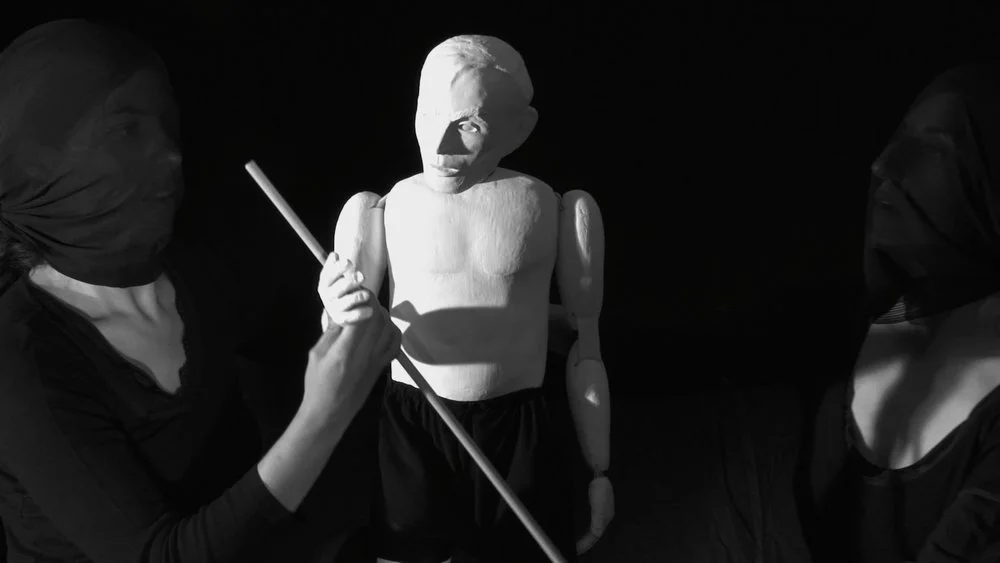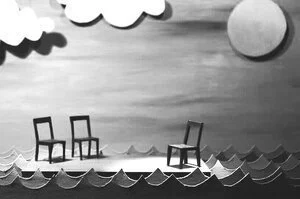theater training
“In the early steps of my career, I performed in school and regional theater. During university in Madrid, I coordinated showcases, and directed a theater company that remains active. I later moved to New York to complete my PhD dissertation on Robert Wilson, while attending workshops at Trisha Brown Dance Company, The Wooster Group, and Atsushi Akenouchi. My training continued in Mexico City and the UK.” — PV
Regional Classic theater, Sławomir Mrożek I University Contemporary theater, Alfred Jarry I National on Early Work I International on Visual Theater.
“Performance is a living dialogue between truth and imagination. Pedro Valiente draw from his path across screen, stage, and visual art, viewing their blend not just as craft, but as a way of connecting with the world. Through language, movement, and image, the audience creates its own story.”
Regional Theater
During school, I performed classic theater, including works by Shakespeare and Molière. In regional theater with Teatro Enea, I participated in Out at Sea by Sławomir Mrożek. Later, I delved into American and European modern theater including the Theater of the Absurd.
— Photo: Chapel Theater for Mrożek‘s Out of Sea
University Theater
During university, I performed with theater companies and coordinated theater showcases. In graduate school, I focused my PhD dissertation on Robert Wilson, contributed articles to El Público magazine, and directed Tilmun Teatro at Universidad Complutense de Madrid.
— Photo The Dead Class by Tadeusz Kantor Foundation
"My early training in theater was shaped by Antonin Artaud, Bertolt Brecht, and especially Adolph Appia, Edward Gordon Craig, and Oskar Schlemmer and the Bauhaus, whose visionary approaches sparked my views on experimental artwork. They revealed the stage as a living medium, guiding me toward a practice grounded in plasticity, visual dramaturgy, and the interplay of movement, image, and space. Alfred Jarry’s Ubu Roi introduced me to absurdity as a means of facing tradition and revealing deeper truths. The fragmented, anti-logical narratives of Samuel Beckett and Eugène Ionesco —mavericks of the Theater of the Absurd— further expanded a formal language rooted in existential inquiry and theatrical subversion.
In Europe, I explored the convergence of arts through the work of dramaturg Heiner Müller, theater-dance pioneer Pina Bausch, and Spanish visionaries like the artist/writer Joan Brossa, alongside the powerful company La Fura dels Baus. Around that time, another major influence entered my life: the Japanese Butoh master Kazuo Ōhno. Drawn to the trailblazing legacy of the Black Mountain College and the Theater of Images, I relocated to New York, where I collaborated with Robert Wilson and completed a PhD dissertation on his creative process. My academic work also brought me the dance innovations of Martha Graham and Trisha Brown Dance Company, while I entered in contact with artists and thinkers like Laurie Anderson, The Wooster Group, Anne Bogart, Richard Schechner, and Marsha Kinder. Along the way, I had the privilege of meeting Philip Glass through the Brooklyn Academy of Music (BAM), as well as Susan Sontag and Isabella Rossellini through The Watermill Center.
These experiences revealed how cross-disciplinary art can redefine storytelling and dissolve borders in the arts. The use of time, space, and interactivity took me toward a model of performance that is non-linear and immersive. At the same time, my drive for contemporary art expanded my idea of the stage as an open environment where language, image, and presence collide —from the radical experimentation of Dadaism and Surrealism, to the spatial poetics of Minimalism and the innovations of artists like Picasso, and later Nam June Paik, Bill Viola, and Marina Abramović. A blend that continues informing a creative practice that moves between performance, installation, and conceptual art.
The influence of filmmakers such as Luis Buñuel, Federico Fellini, Italian Neorealism, and the French Nouvelle Vague provided a cinematic mirror to my early contact with experimental theater. Their poetic imagery, formal innovation, and socio-political critique resonated altogether. Global cinema and cross-cultural narratives unfolded as a continuation of theater’s expressive potential. Later, the introspective minimalism of Kim Ki-duk, the sensual fragmentation of Wong Kar-wai, the psychological surrealism of David Lynch, and the emotionally saturated worlds of Pedro Almodóvar further bridged my background in performance and contemporary art with film. Their distinct approaches to identity, memory, and time opened up a film/media space where theatrical language and visual composition could merge.
This evolution naturally brought the anti-realism of absurdist theater and the disruptive aesthetics of avant-garde art in my filmmaking —inspiring fragmented structures, surreal imagery, and unconventional characters. Digital media became an extension of interdisciplinary vocabularies, carrying forward a spirit of research rooted in hybrid forms and new narratives. Today, this multicultural foundation frames my work across filmmaking, visual theater, writing, and visual art. It feeds an ongoing search of emerging technologies (AI, XR, et al) as both material and metaphor in the unfolding landscape of artistic expression. A new chapter is beginning." — Pedro Valiente
It All Started in Theater
Photo: Bunraku, Japanese puppets theater, by Alejandra Prieto for You Are Mythical film.
"During my time at Universidad Complutense de Madrid (UCM), I performed and coordinated theater programs, while also covering contemporary theater for El Público magazine. I drew inspiration from European art movements, the avant-garde, and the Theater of the Absurd.
As founding director of Tilmun Teatro, I led the company for three years, advancing the use of video on stage in Madrid. We staged works by Bernard-Marie Koltès and Sergi Belbel —both in their Madrid premieres—, and a world premiere of a play by Julio Cortázar. I also wrote Monster’s Decalogue, a visual theater work that was selected by Sala Cuarta Pared." — PV
"The brilliant imagery of Alfred Jarry’s works usually lapse into incoherence and often scatological symbolism. […] His play King Ubu (1896) is often cited as a forerunner of Dadaism, Surrealism, and Futurism movements." 20th century masters Tadeusz Kantor, Robert Wilson, and Peter Brook, were influenced by the avant-garde. I In New York, work with Robert Wilson
AVANT-GARDE
Alfred Jarry (1873-1907) is a French writer precursor of Symbolism, Dada, Surrealism, Futurism, and Theater of the Absurd. "The work of art is a stuffed crocodile. […] One can show one's contempt for the cruelty and stupidity of the world by making of one's life a poem of incoherence and absurdity." — ALFRED JARRY I In Madrid university, work in King Ubu
ALFRED JARRY
"Theater of the Absurd refers to dramatic works of European and American dramatists of the 50-60s who agreed with the Existentialist philosopher Albert Camus assessment that the human situation is essentially absurd, devoid of purpose. Writers as Samuel Beckett, Eugène Ionesco, Jean Genet, Arthur Adamov, and Harold Pinter shared that humankind is hopeless, bewildered, and anxious." I In Tilmun Teatro, world premiere of a Theater of the Absurd play by Julio Cortázar
tHEATER OF THE ABSURD
"My journey began with a school performance as Petruccio in Shakespeare’s The Taming of the Shrew. In high school, I performed Molière, and went on to direct ¡Viva el Duque, nuestro dueño! by José Luis Alonso de Santos —a play I had performed with Teatro Enea. I learned of modern theater through Out at Sea by Polish playwright Sławomir Mrożek in regional theater, while the avant-garde came my way with Alfred Jarry’s King Ubu during my university years. I closed this early acting chapter with No Time to Laugh by Alfonso Sastre, returning to Teatro Enea." — PV
Photo: Rhinoceros by Eugene Ionesco: Arts et Voyages I Alfred Jarry/Avant-garde/Theater of the Absurd: Britannica I LINKS Connecting the Avant-Garde, Art Movements, Theater of the Absurd, and Butoh Dance
Photo: The Taming of the Shrew by Shakespeare, Smithsonian Museum
“I moved to New York to study filmmaking which marked an evolution in my work entering transmedia film and visual theater-dance. Both avenues for exploring boundaries of storytelling.”
TIMELINE
School Theater Actor The Taming of the Shrew by William Shakespeare, The Doctor in Spite of Himself by Molière I University Theater Actor King Ubu by Alfred Jarry, In Love but Discreet by Lope de Vega, director: José Ramón Díaz-Sande, Universidad Complutense de Madrid (UCM)
Regional Theater Actor Viva el Duque Nuestro Dueño, director Pablo Céspedes, Teatro Enea I National Theater Assistant director of Caresses by Sergi Belbel, director Guillermo Heras I Professional Theater Coordinator of Bufons, director. Alberto Jaén I Director of Tilmun Teatro, UCM I Director of visual theater at National Center for the Arts, Mexico.
THEATER TRAINING Directing Tilmun Teatro university theater company. I Writing for El Público theater magazine. I PhD dissertation on Robert Wilson in New York. PRESS Teatro Enea: Pedro Valiente I Teatro Enea: Local Press CONNECTED Articles I Books
— Photo: © Illustration for Mrozek by Daniel Mróz, 1957 I Design for Mrożek’s Out of Sea by Drollic I © Flying Fish Over Mexico by Pedro Valiente I Big Science by Laurie Anderson I King Ub by Alfred Jarry: Michael Meschein
Tracing New Geographies
“Pedro Valiente's theater training has led to collaborative projects, cross-media experimentation, and creative research —an exploration of storytelling, driven by formal training, and lived experiences. It was Butoh what introduced him to new forms of theater-dance, as his academic journey in New York further broadened his artistic vocabulary. His research on Robert Wilson’s interdisciplinary art ended with a PhD dissertation, which placed him among a new generation of artists merging performing and visual arts.
These gounding practices led to Valiente’s work in visual theater time after the early phase in Tilmun Teatro —the company integrated in Madrid’s university video, live performance, and contemporary music. Drawing inspiration from European masters who shaped his early filmmaking training, he continued to work on visual storytelling. These filmmakers aesthetics, alongside the minimalism of Asian directors, informed his approach to creating emotionally rich visual landscapes.” Site I EXTERNAL REVIEW





















